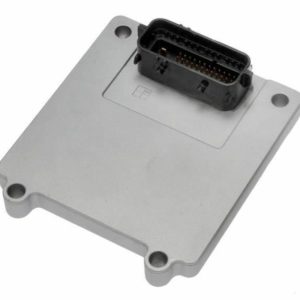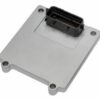Is Your Silverado 1500 Shifting Erratically or Stuck in Gear?
As a mechanic with over two decades of experience, I’ve seen countless GMT900 trucks roll into my shop with transmission headaches. The owner will say, “It was fine yesterday, but today it’s slamming into gear,” or “It won’t shift past third gear, and the check engine light is on.” Nine times out of ten, the culprit isn’t a catastrophic transmission failure; it’s a faulty Transmission Control Module (TCM). The factory T42 module is the brain of your 4L60E or 4L70E transmission, and when it fails, it can mimic a whole host of serious mechanical problems.
From the Shop Floor: A Real-World Diagnosis
“A customer’s 2011 Silverado 1500 came in last week on a tow truck. The truck was stuck in what felt like 3rd gear (limp mode) and had a check engine light glaring from the dash. The owner was worried he needed a full transmission rebuild. I hooked up my scan tool and pulled a P0700 (Transmission Control System Malfunction) and a P0752 (Shift Solenoid A Stuck On). Before condemning the solenoid, I checked the TCM. Sure enough, after swapping in a pre-programmed module, all the codes cleared, and the truck shifted perfectly. It saved the customer thousands and got his work truck back on the road the same day.”
Diagnose a Failing Transmission Control Module
If your Silverado is experiencing any of the following issues, a bad TCM is the most likely cause. Don’t let a simple electronic failure lead you to believe you need a costly new transmission. Look out for these tell-tale signs:
- ✔ Harsh, banging shifts or delayed gear engagement.
- ✔ The vehicle is stuck in “limp mode,” usually only allowing access to 2nd or 3rd gear.
- ✔ An illuminated Check Engine Light or Transmission Warning Light.
- ✔ Diagnostic Trouble Codes (DTCs) such as P0700, P0750, P0751, P0752, or other solenoid-related faults.
- ✔ Complete loss of shifting capability or intermittent communication failure with the module.
- ✔ A sudden drop in fuel economy or signs of the transmission running hotter than usual.
Why Choose Our Pre-Programmed 2007-2013 Silverado 1500 TCM?
This isn’t just a replacement part; it’s a complete, ready-to-install solution. We take an OEM-quality T42 module and program it directly to your truck’s unique Vehicle Identification Number (VIN). This critical step ensures that the module communicates flawlessly with your engine computer and other vehicle systems right out of the box, restoring the precise shift points and torque converter lockup strategy designed by GM for your specific vehicle.
- ✔ No Dealership Programming Required: Save hundreds of dollars and the headache of a trip to the dealer. This module arrives ready for installation.
- ✔ Restored Performance: By managing shift solenoids and line pressure with factory precision, this TCM eliminates harsh shifting and restores smooth, predictable operation.
- ✔ Built to Last: Engineered to meet or exceed original equipment standards and backed by a one-year warranty for your peace of mind.
- ✔ Direct Interchange: This module is a direct replacement for a wide range of part numbers, including 24252114, 24234503, 24235732, 24240449, and more.
Plug-and-Play Installation: Get Back on the Road in Under 30 Minutes
Replacing the TCM on your Silverado is a straightforward job you can do in your own driveway with basic hand tools. For the 2007-2013 Silverado 1500, the module is conveniently located right next to the battery.
- Safety First: Disconnect the negative terminal from your truck’s battery to prevent any electrical shorts and to help reset the vehicle’s computer systems.
- Locate the TCM: Open the hood and find the module mounted in a bracket directly next to the battery on the driver’s side of the engine bay.
- Disconnect and Remove: Carefully unplug the large electrical connectors. Be gentle with the locking tabs. Then, unbolt the module from its mounting bracket.
- Install the New Module: Bolt the new, pre-programmed TCM into the bracket and securely plug in the electrical connectors. You should hear a ‘click’ as they lock into place.
- Reconnect and Verify: Reconnect the negative battery terminal. Start the truck and allow it to idle for a few minutes. Check for any warning lights and take it for a test drive to confirm that normal shifting has been restored.
Expert Pro Tip: Before plugging in your new module, take a moment to inspect the harness connectors for any signs of green or white corrosion on the pins. A poor connection is a common cause of intermittent issues. Use a small pick and some electrical contact cleaner to ensure the terminals are perfectly clean for a solid connection.


